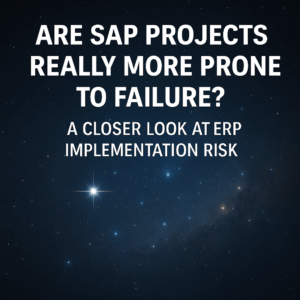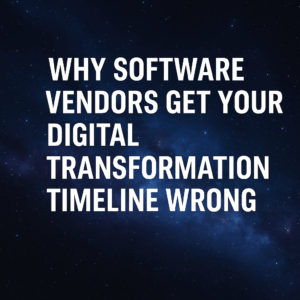When discussing digital transformation with small business owners, the mention of organizational change management is (OCM) followed by blank stares. As a small, tightly-knit group where everyone knows each other and has direct access to leadership, OCM may not seem like a top priority while implementing one of the top ERP systems for small businesses.
Regardless of business size, business vertical, operational complexity, geographical spread (or lack thereof), number or tenure of employees, etc., ignoring organizational change management can lead to problems. The prioritization of different OCM workstreams may be different between SMB and larger enterprises, however, OCM will be a critical piece of any successful transformation initiative.
Consider the below points if you are a small business owner embarking on a digital transformation initiative:
Table of Contents
ToggleEveryone’s voice is louder
In a small business environment, the concept of “water cooler talk” is exceptionally powerful. Even in a remote workforce environment, when everyone knows everyone, opinions of one individual can infect an entire company quickly. It is critically important to ensure alignment and consistency of communication from the very start.
Every job matters
With larger enterprises, there can be more wiggle-room when a workforce is in the hundreds or thousands. With a small business, however, employees wear multiple hats and when one person is out sick it is felt by all.
We often hear of business owners out in the warehouse packing orders during a spike in business. This comradery will be especially helpful during an ERP implementation. However, remember you are now adding a significant amount of work that needs to be handled by someone.
And don’t think for a minute that your ERP systems integrator or reseller will be doing “everything” for you, despite what they may tell you during the sales process. This understanding will need to be communicated across the company, and you will also need a clear implementation plan and organizational model to ensure a successful transformation.
Training will be critical
Many small businesses are moving away from their QuickBooks environment and will be using an ERP for the very first time. Similar to tossing keys to your old manual pickup to your teenager who recently received his/her driver’s license, employees may need extra guidance to make this initiative work. This is where some form of training plan will be necessary; you need to assume that more training will be needed than what is initially quoted in your implementation services contract.
The concept of organizational design becomes real
As part of your transformation, parts of your business are hopefully becoming more automated. This means that processes and resulting roles and responsibilities are going to change, and people will need to be trained on their new processes along with new technology. But what does this look like?
As your business grows, departments begin to form and job roles become more specific as you look at scalability. With a new system you will have new visibility into data and be able to better track performance, set expectations and forecast business fluctuations. Preparing for this does not have to be a daunting task but begins by considering the future structure of your company as part of the implementation planning phase.
Also, be sure to include your workforce and key stakeholders in outlining what the future could look like. Telling people what they “must do” after that fact is very different than having them be part of the decision process in the first place.
The good news is that this is all very achievable for a small business, much more so than larger enterprises who have to navigate massive numbers of people, varying business operations, entities, and geographies. What is important is that the concept of OCM is not overlooked and is built into your plan from the start.





